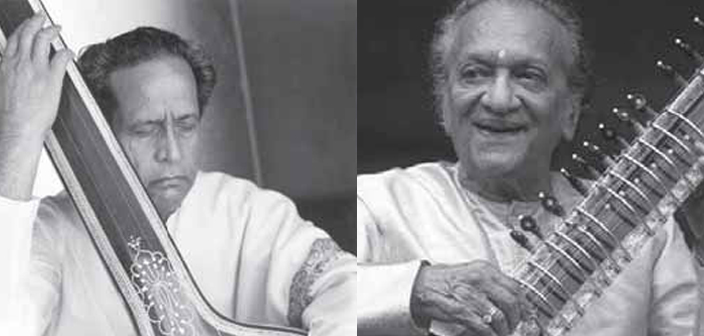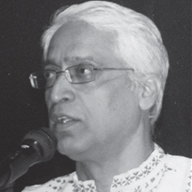Classical music, till the early 20th century, was restricted to the privileged classes comprising royalty, aristocrats and landlords. By the second and third decades of the century, common people could get access to music through 78 rpm commercial discs, All India Radio broadcasts, as well as ticketed classical music performances and conferences (as festivals were called in those days).
In the 1930s started the music circles, which ran their activities through annual subscriptions. In Bombay, circles like Kalyan Gayan Samaj and Suburban Music Circle were set up in the early 1930s, and they have managed to survive despite heavy odds. Dadar Matunga Social Club, which has now been re-christened Dadar Matunga Cultural Centre, was established in 1953. The Vile Parle Music Circle was started in 1957 and the first concert was given by the then reigning queen of Hindustani music, Kesarbai Kerkar, who charged a princely sum of ` 1200 for her performance to that circle, which had an annual subscription of Rs. 12 for one person and Rs. 20 for a couple. The circles could manage their affairs and yet feature musicians of the calibre of Bhimsen Joshi, Ravi Shankar, Vilayat Khan, Halim Jaffer Khan, Bismillah Khan, Hirabai Badodekar, as well as other lesser known but highly talented artistes. The word ‘sponsorship’ did not exist in the lexicon of music oragnisers or artistes in those days.
The death of music circles
The scene began to change in the 1970s. In a city like Mumbai, some music organisers began to solicit sponsorship for their programmes and their efforts met with instant initial success. The immediate result was the steady hike in the fees charged by the musicians. Those who were charging a few thousands (generally a four figure amount) began to demand a five figure honorarium. This trend began to affect the economics of concert organisation. The music circles, with their limited resources, could not gather enough funds to fulfill the expectations of the so called big artistes. This, in turn, decimated their capacity to register fresh members or retain the existing members. They were thus caught in a vicious circle. Many music circles have folded up and those who have managed to survive are leading a precarious existence.
The death or emasculation of music circles has radically changed the economics of concert organising. The artistes who spend their life time over rigorous riyaz expect a fat or respectable remuneration depending on their standing in the fast expanding concert market. They tend to compare themselves to glamorous film stars, playback singers and cricketers.
In a democratic society, there is no bar on expectations, but the harsh reality is totally different. Classical music does not command the price which the artistes think is their due. Over the years, and particularly since the decline of music circles, it has become an unwritten rule that classical music is available to the auditor or recipient for free. Can one think of entering a cinema hall without being charged an entrance fee? Is it possible to watch a one-day international in a stadium without being charged for the entry? Then why do people raise their eyebrows when a classical music show is ticketed even reasonably? The mental make-up of the audience has compelled the organisers to waive entrance fees, which has caused a major upset as far as raising resources for music concerts is concerned. The entry of so called event managers into the field has further spoiled the atmosphere. Event managers as well as the media in general tend to look upon classical music as mere entertainment, which it is not. It is a serious art which needs serious treatment. The presence of event managers has further pushed the fees of the so called star artistes to unaffordable limits.
Indian artistes in poverty and a Bill which will change that
When news flashed about the poverty that Bharat Ratna Ustad Bismillah Khan lived in – he had to write to then Human Resources Development Minister Kapil Sibal about not having money to pay his rent, causing Sibal to pay the shehnai legend’s rent for a full year – India as a nation was shocked.
Apart from the Ustad, others like Khan Mastana (who was Mohammed Rafi’s co-singer in the patriotic song Watan ki raah mein, died a beggar at the Haji Ali dargah) and ghazal and playback singer Mubarak Begum (through the 1950s and 60s, she worked with the best music directors in the film industry, collaborating with S.D. Burman, Shankar Jaikishan and Khayyam for movies that starred legends like Sunil Dutt, Nargis and Rajendra Kumar), have lived in poverty. Who hasn’t heard of the song Itni shakti hame dena daata which is an anthem at many school assemblies, but its creator Kuldip Singh ended up in a Mumbai slum! Doubtless, there are many other lesserknown, but equally talented musicians who are struggling to eke out a living in a society which remembers and honours talents only till their last hit or performance.
Under the circumstances, the Copyright Amendment Bill 2012, which defines the author of copyright as its owner, and secures his lifelong right to royalty over the work, was a welcome legislation. The Bill ensures that every time anyone uses an artiste’s work, he or she gets a share in the profits. Under the copyright law so far, filmmakers and producers would enter into a contract with lyricists, composers and singers, buying off their works in exchange for a pittance. While artistes would end up in penury, film producers would sell these works to business interests, including music companies and telecom firms, making lifelong profits in which artistes had no share. The 2012 amendment corrected this anomaly by amending the archaic Copyright Act of 1957 and making creator king. It defines the author of copyright as its owner, and secures his right to royalty over the work.
The amendment ends the era of indiscriminate remixing of hit songs and says no cover versions (remakes) can be made till six years of the creation of the work. Piracy has been made punishable with two years imprisonment and fine. The Bill also guarantees exclusive rights to performers like snake charmers, jesters and conjurers, mandating payment of royalty to them every time their performance is used for commerce. Performers will also have moral rights.
There is a caveat though; a two-year waiting period before royalty can be claimed, so that the cost involved in creating and publicising a song can be recovered. This is still a work in progress, but definitely a step in the right direction.
An unhappy situation for a classical art
Sponsorship is nothing else but subsidising music programmes. Subsidy for whom? The young and aspiring musicians, or the established ones who tend to corner all the available assignments? This is one field where there is no retirement. Artistes go on performing even when they are past 80. With a number of teaching institutions producing so many talented and competent artistes, there is a deplorable dearth of performance opportunities for them.
This inevitably breeds frustration. There are pools and cartels of a few musicians who tend to grab most of the big ticket events. Even celebrated musicians indulge in subtle or not so subtle arm twisting to solicit programmes for their progeny, and the organisers easily give in to the emotional blackmail. Leave aside ordinary young musicians, their pupils too get frustrated because of this attitude. Such an unhappy situation forces the neglected musicians to start their own organisations. They struggle to raise their own resources and present either their own programmes or invite other organisers musicians who are prepared for a ‘barter’ concert arrangement. This is not at all a happy situation for a classical art. But this
is the reality today. Ultimately, the question boils down to the simple issue of making classical music sustainable and distributing the available resources in an equitable manner. Here lies the crux of the matter.


